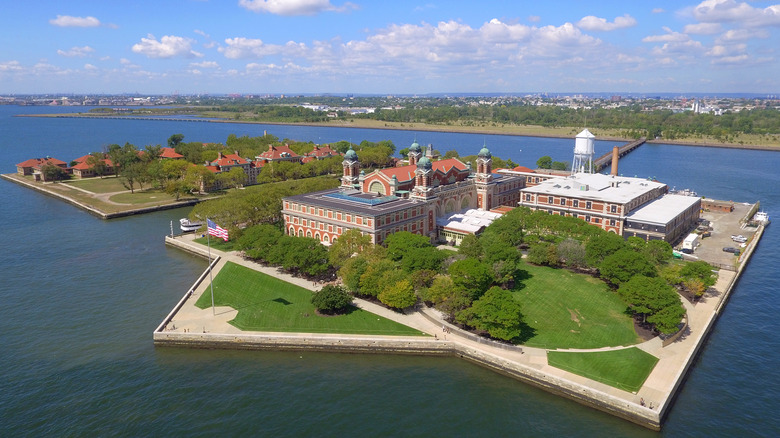The Surprising Thing That Happened On Ellis Island In The Early 1800s
Ellis Island was an immigration station for over 60 years. Millions of immigrants passed through the island before starting their new lives in the United States. Before that, however, Ellis Island was used for different purposes, one of which was as an execution site for criminals — specifically pirates.
Throughout the years, Ellis Island went by different names. It was once called Gull Island for the numerous birds that inhabited the land. In the 1600s, the Dutch people named it Little Oyster Island for the abundance of oysters found there. By the late 1700s to the early 1800s, it was known as Gibbet Island, as it was used as an execution ground for criminals hanged from the gallows, also known as a gibbet (via Oh Ranger). In 1765, Anderson the Pirate was captured on the island and was executed via a gibbet — a structure for public hangings, as reported by West Milford Messenger. In the years that followed, more pirates were executed on the island.
The execution of Pirate Gibbs on Ellis Island
One of the most infamous executions that occurred on Ellis Island was that of Pirate Gibbs, who was responsible for a number of crimes that he himself confessed. Gibbs joined the U.S. Navy at 15 years old, but he was averse to the disciplined Navy life. He began a life of piracy in 1818 and worked with other pirates to steal from vessels and sell precious cargo. Apart from that, Pirate Gibbs also confessed to murder. "I cannot tell exactly how many lives I may have taken, but suppose the number to be about one hundred. The greater part of these were killed in action," he said, as reported by an article in The New York Times.
Upon his capture, Pirate Gibbs was charged with robbery, murder, and destroying a vessel, among other crimes. He was hanged on April 22, 1831, and his body was left on the gibbet for public display an hour after his death before it was taken down. According to History, the last hanging occurred in 1839. Ellis Island was then used as a munitions depot for years before it was opened as an immigration station in 1892. Today, Ellis Island is part of the Statue of Liberty National Monument, and visitors can learn about its rich history at the Ellis Island Immigration Museum.

